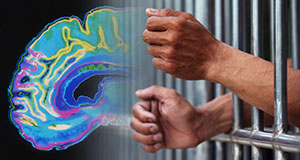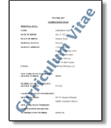Dr. Fisher's Office has moved to:
Lockwood Professional Building
1 Lockwood Drive, Suite 100
Pittsford, New York 14534





copy test
Dr. Fisher's Office has moved to:
Lockwood Professional Building
1 Lockwood Drive, Suite 100
Pittsford, New York 14534
Presentation and Book Signing B&N Pittsford, NY
Images from the presentation at the Pittsford Barnes & Noble 3/07/14
Seymour Fisher Memorium
Jerid M. Fisher, Ph.D., ABPN
Pittsford, New York
Throughout his life, Seymour Fisher, my father, worked tirelessly to perfect a comprehensive body image theory that could withstand the rigors of scientific scrutiny. Well before the era of personal computers and internet research, he relied upon simpler but nonetheless reliable fact finding tools. I carry with me in my mind’s eye, an indelible image of my father seated in his favorite chair, writing (with an almost palpable urgency) on his legal pad, surrounded by piles of peer reviewed research articles, books, dissertations, and computer generated printouts of data (from his own research). My father’s life work took on the complexion of a mission as he searched for clues among these data that he wove into the fabric of his body image theories. It was this single minded dedication that was the well spring for my father’s prolific output of articles and books, spanning the last half of the 20th century.
On the day before his death, at age 74, my father was still on the search, working on yet another book idea about body image, derived from data-driven research. And in the days after his sudden death, my mother and I found his office as it had been for all those years, filled with the many familiar piles of articles, books, dissertations, and computer printouts. These were the tools of my father’s trade and the source of his passions. I closed my eyes and saw him once again, writing, probing his own research and the extant literature to understand how a person’s concept of his or her own body shaped individual choice, pathology, achievement, sexual gratification, values, and behavior.
For those of you who never met my father, you cannot know his quick wit, wry smile, enormous intellect, and love of scholarship. But what you can know is the rich legacy of ideas and theories he left behind in hundreds of articles and books (with many able collaborators including Dr. Sidney Cleveland, Dr. Roger Greenberg, and Dr. Rhoda Fisher, my mother). Among his books, Body Image and Personality (with coauthor Sidney Cleveland) was his first (1958), while his last work (with coauthor Roger Greenberg) from Placebo to Panacea (1997) was published posthumously. As I have been asked to write this biographical sketch as an introduction to the Annual Body Image Dissertation Award in his honor, you should know that my father was proudest of his two-volume work, Development and Structure of the Body Image (1986). In more than 1000 pages, he reviewed and critiqued body image research from 1969 to 1985. This work is a must-read for any researcher who desires to hear Seymour Fisher speak again about his life’s passion—body image.
In weighing the future of the science of body image, my father predicted (in 1986), “I firmly believe we will eventually find that measures of body perception are among our most versatile predictors of how people will interpret and react to life situations” (p. xiii). My father was intrigued with the approaching 21st century and the technologic leaps in biomechanical engineering that were transforming Western culture. He wondered how the interface between such technologic advances as bionics and the influence these devices might have on the body boundary. He wrote (in 1986), “One of the most visible of these changes is the increased capacity for artificially reshaping the body, almost as an engineer would when reconstructing a nonliving structure. Already, we have pacemakers, artificial limbs and joints, cross-species transplants, breast prostheses, and penile implants. Significant numbers of people in the population have gadgets embedded in their tissue…Will the availability of potential body rebuilding be reassuring to people and make them feel generally less threatened by the idea of serious body pathology? Or will the blurring of the concept of the unique human body render it more difficult to maintain a sense of bounded individuality?” (p. 656).
Drs. Cash and Pruzinsky, young colleagues of my father, in creating this Seymour Fisher Outstanding Body Image Dissertation Annual Award, honor his memory, for they understand that his passion for scientific inquiry was superseded only by his desire to spark the same fervor among his students and colleagues. An award that encourages a young mind to contribute to the corpus body image, that allows a new generation to explore body image concepts in the 21st century, would make my father smile. Our 21st century world, with its many technologic, advances, paradoxically ensconced in a new kind of body vulnerability borne of the threats of global terrorism, is fertile ground for body image research. The Fisher family, Drs. Rhoda, Jerid, and Eve Fisher (Whitmore) are forever grateful to Drs. Cash and Pruzinsky for creating this award.
References
Fisher, S. (1986). Development and structure of the body image: Vols. 1 & 2. New Jersey: Lawrence Erlbaum Associates.
Fisher, S., & Cleveland, S. (1958). Body image and personality. New York: Van Nostrand.
Fisher, S., & Greenberg, R. (1997). From panacea to placebo. New York: John Wiley.
 Jerid Fisher, PhD, ABN is a forensic neuropsychologist with over four decades of experience. Dr. Fisher's extensive professional career includes the founding of innovative businesses, collaborative works, articles, publications, consultation and speaking engagements at the leading edge of neuropsychology
Jerid Fisher, PhD, ABN is a forensic neuropsychologist with over four decades of experience. Dr. Fisher's extensive professional career includes the founding of innovative businesses, collaborative works, articles, publications, consultation and speaking engagements at the leading edge of neuropsychology
Dr. Fisher is also a leader in support of many community-based projects, charities and the National Academy of Neuropsychology Foundation.

